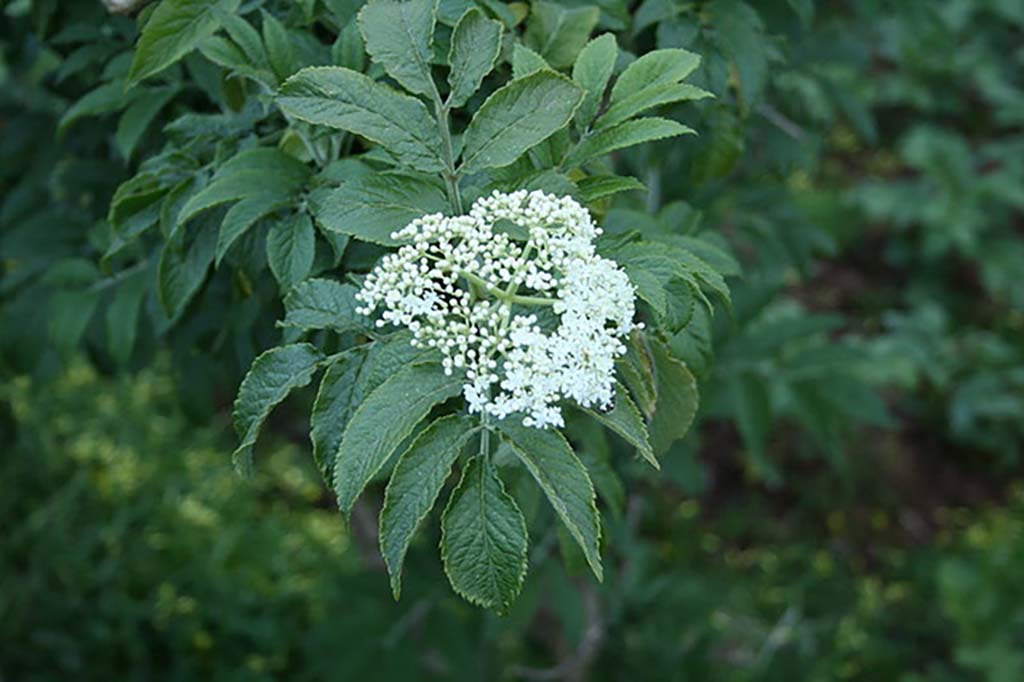
Liechtenstein
Elder Blossom
Sambucus

General Description / Cultural Significance
The mountainous country of Liechtenstein is located in the Central European Alps, neighbored by Switzerland and Austria. Liechtenstein is blanketed by beautiful evergreen forests and wildflower-covered slopes. Across the country’s wild grasslands, hillsides, and fields, the Elder Blossom, Sambucus, grows plentifully. It flowers in June and July, releasing its floral, berry-like scent into the Liechtenstein air. Peoples across the Alpine region have mindfully collected the Elder Blossom for medicine and protection since antiquity, careful not to upset the Elder Tree spirits and bring misfortune upon themselves. The plant’s hollow branches are ideal for starting fires; in fact, the word “elder” is derived from the Anglo-Saxon “æld” which means fire. The Elder Blossom’s aroma has been said to repel flies and the tree is commonly planted near homesteads to both keep away insects and attract good luck.
Elder Blossom flowers are cherished for their medicinal properties as a diaphoretic, laxative, and diuretic. As a tea or mashed and applied topically, the flowers are used as an astringent to treat rheumatism. In traditional European herbalism, dried Elder Blossoms are transformed into tinctures and extracts for their abilities to treat common cold and flu symptoms and fevers. Modern research has established a long list of powerful, medicinal qualities associated with Sambucus, including its antibacterial, anticancer, anti-inflammatory, antimicrobial, antiviral, and antioxidant abilities. To this day, Elder Blossom extracts are added to Liechtenstein foods, beverages, and deserts for their distinctive flavor and nutritional value. It is no surprise that the Elder Blossom is now used around the world for its medicinal value and as a valuable fragrance in perfume.
Climate Change / Conservation Status
The country of Liechtenstein has been lucky to experience minimal effects of climate change, so far. However, the region has seen an increase in mean temperatures, a trend that is projected to continue into the coming decades. Vascular alpine plants are creeping up the mountains in response to the warming trend. Researchers predict that reduced snowfall and more intense storms could cause more flooding, landslides, and avalanches which are very harmful to the complex ecosystems of alpine forests. Forest product enterprises are currently encroaching on naturally growing Elder Blossoms, which help stabilize the soil.
The plant is strikingly drought resistant and areas of the world experiencing harsher climate trends, such as California, US, have taken to planting Elderberries. These plants eventually become completely independent, able to flourish even without irrigation. Sambucus has survived millennia of withstanding the Earth’s changing environments. Today, due to its hardiness and resilience, Sambucus just might be able to outlive other flora which is struggling to adapt to a warming world.
Alternate Names
Alpine Elder
Sources
Britannica, 2022. Liechtenstein. Encyclopædia Britannica. [website]
CABI, 2022. Sambucus nigra (elder). Invasive Species Compendium. [website]
EEA, 2020. Climate Change Mitigation: Why Care? (Liechtenstein). European Environment Information and Observation Network. [website]
Endicott, M., 2019. A food to farm as climate changes: Elderberries. Bulletin of the Atomic Scientists. [website]
Engels, G. & Brinckmann, J., 2022. European Elder: Sambucus nigra. American Botanical Council. [website]
Morgenstern, K., 2020. All about the Elder-tree – its myths, magic, and medicine. Sacred Earth. [website]
Permanent Mission of the Principality of Liechtenstein to the United Nations. This statement can be found on the World Sensorium original website.

